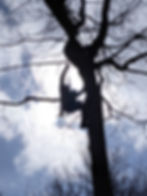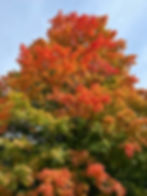
Tree maintenance doesn’t stop at the end of the summer, and in fact there are a number of reasons where it can be beneficial to prune your tree during the dead of winter. Perhaps the most obvious advantage to pruning trees in the winter is that normal disease vectors such as fungi and insects, are less active. So, for example, the elm bark beetle that spreads Dutch Elm Disease (predominantly Scolytus multistriatus in North America) is dormant in the cold, and does not become active until early summer.

While trees are large, resilient organisms, there is always an energy cost to live wood pruning. In fact, the benefits of pruning (safety, aesthetics, branches with compromised growth, line or structure clearance) must always be weighed against the cutting damage that pruning inflicts on the tree. Pruning has an energy cost- when live limbs are removed, the canopy is reduced (thus the photosynthetic capacity of the tree) and then there is exposed limb injury must be repaired.
This lends to another benefit of winter pruning. Energy balance. After leaf-drop, that season’s canopy has provided all the energy possible. In other words, the tree has maximized the energy invested in producing the canopy leaves that season- it has gotten a full season of photosynthesis after leaf emergence. The most costly time to prune is immediately after leaf emergence, when a significant amount of energy has gone into growing the leaves, only to have them removed.
Winter tree pruning can have a detrimental effect on the tree in some cases. One problem is when the plant hardiness is not compatible with the climate in which you are growing the tree. So, for example, if you are growing a Zone 7 tree in a Zone 5 climate, that tree may be more susceptible to cold temperature damage. This would be exacerbated by late-Fall or early Winter pruning. In this case, it is best to wait until the end of the Winter before pruning. With native species, there is much less risk of cold-weather tissue damage. For example, pruning a White Oak in Essex County in the winter is less likely to result in cold weather damage, than pruning a White Oak that might have been planted in Sudbury. Pruning high sugar-sap trees like Sugar or Black Maple can result in sap runs that leave a black stain on the wood that some customers find unsightly, and the sap loss could be detrimental to yields in the case of sugaring operations.

A healthy tree that is pruned in the winter - whether for clearance, rubbing branches, weak branch angles, will demonstrate a more vigorous growth in the Spring. This is because the tree ‘energy’ in the form of photosynthates, is stored in the roots (mostly) the trunk, and to a much lesser extent, the crown. Each growing point on the tree is considered more or less an energy sink until leaf emergence. Thus, by reducing the amount of energy sinks pre-bud break, more energy is available for the remaining growth points. This is a big advantage with fruit trees- pruning fruit trees in late winter will cause a concentration of growth in the fruit spurs, and a better fruit yield in the Spring.
.png)





